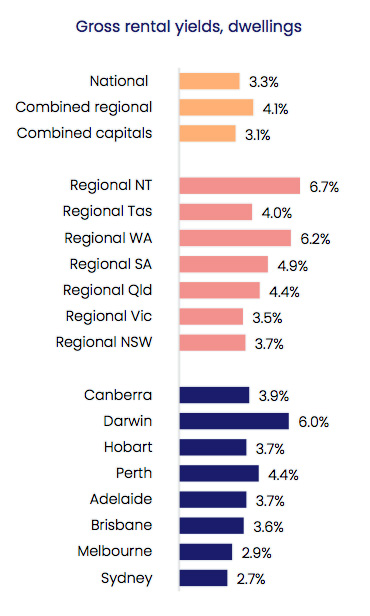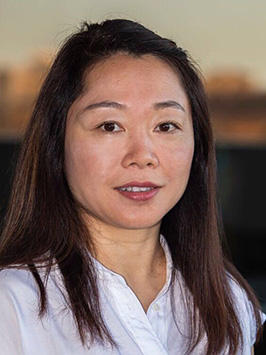Are soaring rents enticing investors?
A sustained period of strong rental growth has seen national dwellings record the highest annual growth in rental values since December 2008, with investors now weighing up yields against property price movements.
While the city of Liverpool in Western Sydney NSW waits for evacuation orders from rising floodwaters, investors are eyeing another type of rising liquidity in the area, as rental yields nudge record levels.
The surge in rent prices comes on the back of undersupply in the market, which is also a national phenomenon, and home and apartment buyers are responding to interest and cash rate hikes by passing the costs to tenants.
PRD chief economist Dr Diaswati Mardiasmo said rising rents, low or falling vacancy rates and a low average number of days on the market indicate a strong demand for rentals.
“This in turn leads to higher rental returns and faster occupancy for better cash flow.
“Slowing property price growth is good news for all property investors.
“Planned developments for an area improve liveability, providing the potential opportunity to attract more people to the area, leading to strong rental demand and future capital growth,” he said.
CoreLogic’s Hedonic Home Index released this month shows rents are consistently rising at a faster rate than housing values, increasing nationally by 0.9 per cent in June and taking the annual growth rate to 9.5 per cent, which is the highest annual growth rate since December 2007, when John Howard passed the top gong to Kevin Rudd.

CoreLogic Hedonic Home Value Index July 1 2022
“It is worth noting that such strong rental conditions were achieved in the absence of international students, overseas travellers, and migration,” University of Sydney Economics Associate Professor Dr. Stella Huangfu told API Magazine.
“There are two driving forces: demand and supply.
“The demand factor is a reduction of the average household size since the start of pandemic.
“People simply need more spaces to work from home, and the supply side factor is the growing shortage of rental accommodation available, which is driven by the long-running downturn in investment between 2015 and 2021.”
Apartment appeal
On the ground in Western Sydney, rising rent statistics are no surprise to Guardian Property Specialists property mentor Roy Halabi, who confirmed for API Magazine the rental market there is particularly strong in terms of yields.
“We are currently at zero vacancy in our rent roll throughout Western Sydney,” Mr Halabi said.
“The current rental rates are on the way up and the demand by investors is definitely increasing.”
SQM Research Weekly Rents Index, for the week ending July 4, 2022, showed the median rent on a three-bedroom house in Liverpool was $510, indicating a month-on-month increase of 2.4 per cent, a quarterly change of 6.8 per cent and a 12-month change of 10.4 per cent. The median unit price was $408, showing a rolling quarterly increase of a massive19.4 per cent.
Implied gross rental yields for the Western Sydney suburb are 4.4 per cent (all units), 4 per cent (two-bed units), 3.1 per cent (three-bed house) and 2.6 per cent (all houses).

Roy Halabi, Guardian Property Specialists property mentor
“As the interest rates continue to rise, affordability will continue to decrease, which will drive the apartment market upwards as it becomes a more desirable option for investors and owner-occupiers alike.
“Investors will be coming out more, driven by a softer market and the high rental yields,” Mr Mardiasmo said.
The extra 50 basis points added to the RBA’s cash rate rise on 7 July means loan repayments on an average mortgage over 25 years of $750,000, will add $205 per month on top of previous May and June increases, pushing up average monthly mortgage repayments to $400 per month.
Rental tenants are footing the bill.
“We will see more interest rate rises throughout the remainder of the year and I expect the RBA will lift the cash rate at least twice more in the second half of this year to curb inflation: 0.5 basis points in July, and then 0.25 basis point in August,” Ms Huangfu said.
“I then expect a pause in interest rate hikes because of lower inflation outcomes, in fact, the supply chain disruptions (caused by pandemic, Russia’s invasion of Ukraine, and harsh weather) have started easing already.
“By the end of this year, the cash rate will be 1.5 per cent and the steep increases in the cash rate will affect the rental market where owners will pass the extra borrowing cost to tenants and due to constrained borrowing power and tightened lending conditions, would-be-first-home buyers will have a reduced chance of obtaining and affording a housing loan.
“As a result, many of them will be back in the rental queue instead of buying a property.”
The renewed rental yields will attract more investors and hence increase supply in the rental market.
- Dr Stella Huangfu, University of Sydney Economics Associate Professor
For the past five months, national rents have risen faster than housing, placing renewed upwards pressure on yields. The average gross yield has increased from 3.21 per cent to 3.33 per cent, according to CoreLogic data.
“It’s likely rents will continue to outpace growth in housing values, driving a rapid recovery through yields that may help to offset less demand from investors, although this sector of the market is generally more motivated by prospects of capital gains than rental returns,” CoreLogic Research Director Tim Lawless noted.
SQM Research data shows implied gross rental yields in July for Melbourne are 5.7 per cent (units) and 3.9 per cent (houses), Adelaide (5.9 per cent, units, 3.8 per cent, houses), Perth (6.6 per cent, units, 3.8 per cent houses), Darwin (6.7 per cent units, 9.6 per cent houses and Brisbane (6.3 per cent, units, 5.3 per cent, houses).
Regional rents run rampant
Regional Australia, in some cases, is generating equal if not better yields than metropolitan areas.

Dr. Stella Huangfu, University of Sydney Economics Associate Professor
In the month to June and 2.9 per cent over the June quarter, a 30 basis point increase on the three months to March.
In the central west regional city of Dubbo, NSW, for example, property gross rental yield on three-bedroom houses is 5 per cent and two-bedroom units, 5.8 per cent.
In South Australia’s Port Augusta, three-bedroom house gross rental yield is a healthy 7.1 per cent and for two-bed units it’s 7 per cent.
Collingwood Heights in Albany in Western Australia’s southwest has two-bedroom unit yields of 7.3 per cent, which is topped by Katherine, Northern Territory, at a whopping 8 per cent (two-bed units).
Sydney and Melbourne unit rents are now rising substantially faster than house rents, with tenants taking advantage of more affordable medium to high density rental options.
“We will continue to see rental markets remaining tight and rents going north until at least the end of this year,” Ms Huangfu said.
“The reopening of the international border will add more upwards pressure on rental demand.
“We have seen that at the national level; rents have increased faster than house values for 5 months now, which has significantly improved rental yields (3.33 per cent now) compared to early this year (3.21 per cent).
“The renewed rental yields will attract more investors and hence increase supply in the rental market.”
It’s not all bad news for renters.
“Support comes from a strong labour market,” Ms Huangfu said.
“We have record low unemployment alongside a generational high participation rate that will help renters to meet rent payment obligations, despite rental increases and rising living costs.
“In fact, this is a key factor that the RBA will take into account when making interest rate decisions: given the current economic situation, the cash rate should be high enough to tame inflation but not so high such that it becomes contractionary and triggers a recession,” Ms Huangfu said.
CoreLogic Q2 2022 Rental Review key trends
- National dwelling rental values rose 0.9 per cent in June and rose 2.9 per cent over the June quarter.
- National dwelling vacancy rates fell to 1.2 per cent from 2.2 per cent this time last year.
- Capital city rents increased 3.0 per cent over the June quarter, outpacing regional rents (2.7 per cent) for the first time since the onset of COVID.
- All eight capital cities saw an increase in rental values over both the latest quarter and year-on-year, as did the individual house and unit markets.
- National unit rents recorded double-digit annual growth for the first time, rising 10.0 per cent over the 12 months to June.
- Adelaide recorded the tightest rental markets across all property types, with 0.3 per cent of Adelaide’s houses and units vacant in June.
- Adelaide also recorded the strongest rental growth across both property types over the June quarter, with unit rents rising 3.9 per cent over the three months to June and up 4.4 per cent for house rents over the same period.
- Canberra remains Australia’s most expensive capital city rental market with a typical house renting for $759 per week and a typical unit costing $573 per week.
- Melbourne replaced Adelaide as Australia's most affordable house rental market, with the typical house renting for $506.
- National dwelling gross rental yields increased to 3.33 per cent for the quarter with mixed results among the capitals.




















